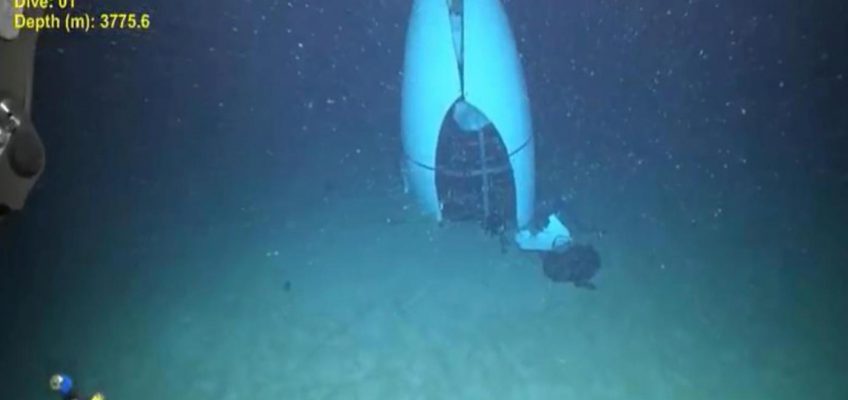David Lightman | (TNS) McClatchy Washington Bureau
WASHINGTON — Donald Trump and Kamala Harris agree on this much: Groceries cost too much.
But despite promises from each presidential candidate that they’ll take bold steps to stop the price madness, experts say there’s probably little they can do.
“The rate of price growth has reverted back to normal, but prices will not go back down,” said Aaron Smith, professor of agricultural and resource economics at University of California, Berkeley.
Harris vows to curb what she called grocery price gouging. Trump says that he’ll lower energy costs and prices overall, which in turn will mean less expensive food
Analysts agree a president is largely handcuffed dealing with food prices. Any presidential initiative probably needs congressional approval. Republicans have been unenthusiastic about anti-gouging measures and Democrats are not eager to embrace Trump’s energy production ideas.
And there are questions about whether either candidate’s initiatives are targeted in the right place.
“There is little evidence of price gouging. Reported net profits by food companies over the past couple of years show no evidence that profits are higher than average over the last decade,” said Joseph Glauber, senior research fellow at the nonpartisan International Food Research Institute.
“Likewise,” he said, “It is unlikely that reducing the cost of energy by itself would have a significant impact on the cost of food.”
Why are food prices so high?
Food prices are affected by a wide variety of factors, including weather, import and export policy, energy prices, labor, supply chains, and marketing costs.
Though food prices have stabilized recently, consumers are still feeling the effects of price hikes in previous years. Grocery prices in 2022 alone jumped 11.4%., according to the U.S. Department of Agriculture’s Economic Research Service. Major reasons were that egg and poultry prices were up because of an Avian flu outbreaks, and Russia’s invasion of Ukraine helped boost energy and grain costs.
The rate of increase slowed somewhat last year, but grocery prices still grew 5%, as supply chain issues continued.
Prices have studied this year, as calmed this year, as energy costs stabilized and supplies were more in balance.
Food bought for use at home, which reflects grocery store prices, was up an average of 0.9% in the 12 months that ended in August, according to the federal Bureau of Labor Statistics.
Grocery prices are expected to continue going up at that pace the rest of this year and in 2025, according to the Economic Research Service.
Still, said Berkeley’s Smith, “people understandably feel poorer because they notice the higher prices.”
Harris wants to stop gouging
Vice President Harris, the Democratic presidential nominee, has vowed to fight food price inflation partly by tackling what she calls grocery price gouging.
“As president, I will take on the high costs that matter most to most Americans, like the cost of food,” she told a rally in North Carolina recently.
In her economic proposal, unveiled last month, she said she would “advance the first-ever federal ban on price gouging on food and groceries.”
Harris said she direct her administration “to crack down on unfair mergers and acquisitions that give big food corporations the power to jack up food and grocery prices and undermine the competition that allows all businesses to thrive while keeping prices low for consumers.”
She also pledged to “support smaller businesses, like grocery stores, meat processors, farmers, and ranchers, so those industries can become more competitive.”
Trump and GOP lawmakers have said Harris’ idea was essentially a way to control prices.
At a Capitol news conference Tuesday, Sen. Joni Ernst, R-Iowa, said Harris wants “communist price controls. Sen. Shelly Moore Capito, R-W.Va., listed increases in the price of bread, ground beef, gasoline and other items in recent years, and declared “this to me is the issue of the presidential campaign.”
Gouging usually refers to price increases that occur when demand is strong, usually after emergencies. California has an anti-gouging law that limits how much can be charged after an emergency has been declared.
Nate Rose, senior director of communications for the California Grocers Association, called Harris’ claims “ a political narrative that isn’t borne out by the data.”
Grocery profit margins have historically been very thin. “The reality is with razor thin profit margins there’s really no place for inflationary impacts to go other than back to consumers in the former of higher prices,” Rose said.
Trump’s plan to reduce costs
Tuesday night at a town hall in Michigan, a participant asked Trump how he would stabilize food prices.
“We have to start always with energy,” he told the group. “There’s no bigger subject. It covers everything.”
He said his goal is to get energy bills down 50% in a year.
Trump also said he would work with farmers to provide more markets for their products, perhaps by restricting imports. Farmers are being “absolutely decimated,” he said, and a reason is that “We allow a lot of farm product into our country.” If he’s elected, Trump said, “We’re not gonna allow so much (to) come.”
The key point Republicans are trying to make is that “the numbers don’t lie—Kamala Harris’ dangerously liberal economic agenda have sent food costs soaring with overall grocery prices up 21% since she took office,” said Taylor Rogers, a Republican Party spokesman.
“President Trump will once again cut taxes and unleash American energy to lower prices on groceries and other goods when we send him back to the White House,” Rogers said.
Energy costs account for roughly 4% of food prices, the USDA says. Prices are affected by a variety of factors that can be difficult for anyone to control.
The cost of commodities such as wheat, corn and so on accounts for only about one-fourth of the retail cost of food.
“The is accounted for by the cost of processing, transporting, marketing, etc. These costs are driven by other factors such as energy and labor costs,” Glauber explained.
_____
©2024 McClatchy Washington Bureau. Visit mcclatchydc.com. Distributed by Tribune Content Agency, LLC.




